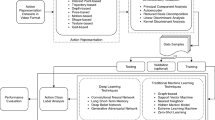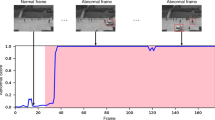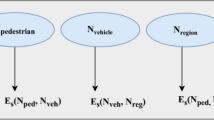Abstract
Automatic video content classification attracts much attention from researchers in multimedia analysis because the management of video content is a challenging task. In this paper, a visual feature representation composed of editing, color, texture and motion features is proposed which is shown to be effective in differentiating among various video contents. A modified Directed Acyclic Graph Support Vector Machine (DAGSVM) model as the classifier is also presented. Experiments show that the features extracted have improved the discriminative ability between different video contents and the computational complexity has also been reduced. By introducing the DAG policy, the performance of the classifier has been enhanced and the classification results demonstrate the precision and effectiveness of this approach, compared with the other two classification methods. In addition, the proposed algorithm can be applied to video searching and harmful-video content filtering, etc.






Similar content being viewed by others
References
Chang C-C, Lin C-J. LIBSVM: a library for support vector machine http://www.csie.ntu.edu.tw/~cjlin/libsvm/
Cherkassky V, Ma Y (2004) Practical selection of SVM parameters and noise estimation for SVM regression. Neural Netw 17(1):113–126
Geetha MK, Palanivel S (2007) HMM based automatic video classification using static and dynamic features. International Conference on Computational Intelligence and Multimedia Applications 3:277–281
Hsu W, Lin C-J (2002) A comparison of methods for multi-class support vector machines. IEEE Trans Neural Netw 13(2):415–425
Lefèvre S, Vincent N (2007) Efficient and robust shot change detection. Journal of Real-Time Image Processing 2(1):23–34
Platt JC, Cristianini N, Shawe-Taylor J (2000) Large margin DAGS for multiclass classification. Advances in Neural Information Processing Systems, pp 547–553
Truong BT, Venkatesh S, Dorai C (2000) Automatic genre identification for content-based video categorization. Int Conf Pattern Recognit 4:230–233
Xi Z, Gang LX (2004) Survey on video temporal segmentation. Chinese Journal of Computers 27(8):1027–1035
Xu LQ, Li Y (2003) Video classification using spatial-temporal features and PCA. Proceedings of the 2003 International Conference on Multimedia and Expo (ICME ’03) 3:485–488
Acknowledgments
The authors wish to thank Miss Dan Qin, Mr. Bin Chen, and Mr. Zhixin Fang for their selfless help. This research is funded by the National Natural Science Foundation of China under grant number of 60702042 and 60802057, and the National 863 Hi-Tech Research and Development plan of China under grant number of 2009AA01Z407.
Author information
Authors and Affiliations
Corresponding author
Rights and permissions
About this article
Cite this article
Jiang, X., Sun, T. & Wang, S. An automatic video content classification scheme based on combined visual features model with modified DAGSVM. Multimed Tools Appl 52, 105–120 (2011). https://doi.org/10.1007/s11042-010-0463-9
Published:
Issue Date:
DOI: https://doi.org/10.1007/s11042-010-0463-9




